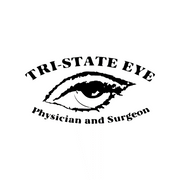
When considering cataract surgery a variety of options will be made available to the patient, from choosing what type of surgery to have to choosing which intra-ocular lens implant would best benefit the patient from a variety of lenses. The most important part of the procedure is patient education. The type of intra-ocular lens implants a patient is a candidate for is best determined by a collection of measurements, dilation, and evaluation of the patient’s eyes. The patient’s daily activities are also taken into consideration. This collection of information can assist Dr. Palydowycz and the patient in making a decision that is in the patient’s best interest.
The various intra-ocular lens choices available range from traditional monofocal lenses to lenses that correct astigmatism in the lens itself, to lenses that correct problems with distance, intermediate or middle vision, or near vision—depending on the lens. The lens options are: Monofocal IOL; Multifocal IOL; Toric IOL; Crystalens IOL; and Trulign IOL. The foundation of these intraocular lenses is to improve distance vision. While they do minimize the need for correction with eyeglasses at distance, some patients may still require glasses after surgery for minimal correction.
There are no guarantees of not needing to wear glasses after surgery with any lens choice. When choosing an intraocular lens, a patient’s current refractive error is taken into consideration. Whether distance, intermediate, near and/or astigmatism is involved, an intraocular lens that best fits each individual’s needs can be determined with a thorough evaluation and discussion with Dr. Palydowycz.
A Monofocal lens will minimize the amount of distance prescription needed in glasses after surgery. However, there will still be a need for near or reading glasses at the very least, and possibly glasses for the intermediate/ computer or middle distance.
A Multifocal lens will not only provide correction of distance vision, but also near vision. Minimal correction for small print may be required. This type of lens may best benefit someone already familiar with bifocal eyeglasses; a person that places a high value on reading or close work would be an ideal candidate.
A Toric lens is a monofocal lens that corrects for distance vision and astigmatism correction in the lens itself. This will minimize both the need for a distance glasses prescription, and the correction of astigmatism in eyeglasses after surgery. The distortion that most patients experience with astigmatism is corrected.
A Crystalens lens implant will provide correction at distance and intermediate vision. Some near vision may also be corrected; however eyeglasses for reading may still be required for small print after surgery. The design of this particular lens enables it to function like the natural lens within a younger eye by flexing back and forth to allow accommodation at various focal lengths.
A Trulign lens has the same features as the Crystalens with correction of distance, intermediate and some near vision, but with the added capability of correcting astigmatism in the lens itself, like the Toric lens. This accommodating lens can minimize the need for astigmatism correction after surgery.
Cataract surgery, along with the benefits of the various intraocular lenses, can provide brighter colors, and improve visual function and clarity that would best fit each patient’s lifestyle. In a national survey Dr. Severin B. Palydowycz was one of the most accurate and precise surgeons in the county using Premium Lenses.
About the Business
Have a question? Ask the experts!
Send your question

